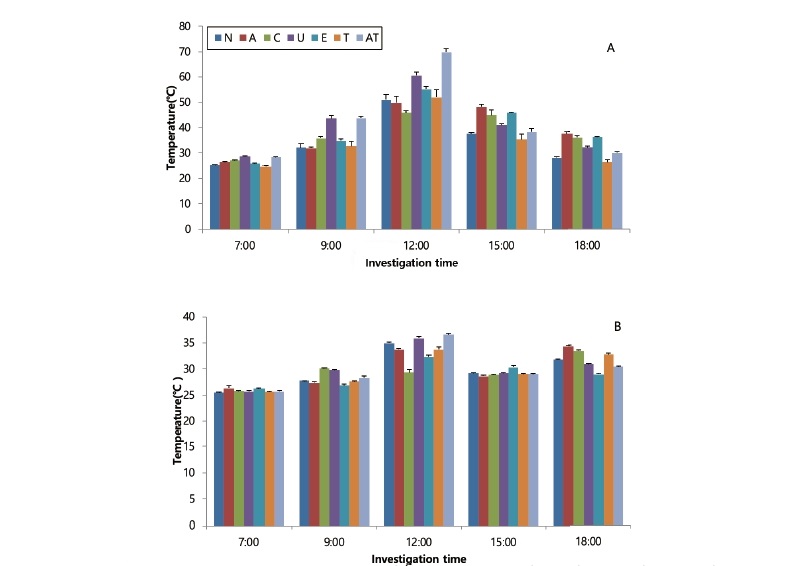Abstract
The school playground is used not only for students' physical and recreational activities but also for leisure activities for local residents. The purpose of this study was to measure the temperature change according to the covering material of the playground at surface and 1m height on the ground during the summer season (mid-July to late September) at the elementary school grounds (9, 12, 15, 18:00). Surface temperature was higher in the order of artificial turf, urethane, and epoxy resins at 9 to 15 hours. At noon, the artificial turf surface temperature exceeded 50℃ from mid-June to mid-September, indicating an unsuitable temperature for activity. From 9:00 to 15:00, the surface of natural turf was more than 10℃ lower than artificial turf. In the summer, artificial turf playgrounds need to be restricted due to the high surface temperature.
Figures & Tables

Fig. 1. Mean surface (A) and 1 m height above the ground (B) temperature depending on playground cover materials in playground of Youngho elementary school in Andong, Korea on June 16, 2015. The error bars represent standard deviations. N: Bare soil; A: Asphalt road; C: Concrete road; U: Uretan track; E: Epoxy ground; T: Natural turfgrass; AT: Artifi cial turfgrass.


